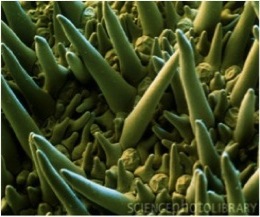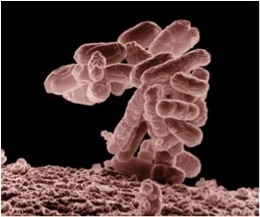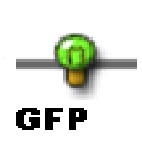Team:UEA-JIC Norwich/Human practices
From 2011.igem.org
Benjevans1 (Talk | contribs) |
|||
| (101 intermediate revisions not shown) | |||
| Line 1: | Line 1: | ||
{{Banner}} | {{Banner}} | ||
| - | <h1> | + | __NOTOC__ |
| - | + | <h1 style="font-family:verdana;color:green">OUTREACH...Taking Synthetic Biology to the younger generation</h1> | |
<br> | <br> | ||
| - | As a team we decided that public engagement would be a great way to share aspects of our project and we | + | <p style="color:#000000"> |
| + | As a team we decided that public engagement would be a great way to share aspects of our project and we aimed to do this through outreach activities working specifically with primary school children. Our aim was to improve the children's knowledge and understanding of not only biological sciences but Synthetic Biology in particular. Our activities were held during term time to engage with school children and encourage them to think about Synthetic Biology. They then had the chance to apply their knowledge and design and create a synthetic organism of their own. | ||
<br> | <br> | ||
| - | + | <br> | |
| + | In order for members of our team to feel more confident working in schools we all registered as Science, Technology, Engineering and Mathematics (STEM) ambassadors which provided an induction session into working with children. This induction took place towards the start of our iGEM experience with our local STEM Network Co-ordinator in time for our first event which took place at Avenue Junior School, Norwich on Thursday 21st July 2011. This was a two hour session held in the afternoon with a year 5 class. The activities were then developed in order to take part in a Synthetic Biology based science, art and writing project which took place on Wednesday 14th September 2011 at St. Peter and St. Paul primary school, Carbrooke. | ||
| + | <h1 style="font-family:verdana;color:green">EVALUATION OF OUR FIRST OUTREACH EVENT</h1> | ||
| + | <html> | ||
| + | <br> | ||
| + | <p style="color:#000000">The UEA/JIC iGEM team’s first outreach event took place on Thursday 21st July 2011 at Avenue Junior School. Two of the team members worked with a year five class for the duration of the afternoon in the last week of their academic year. | ||
| + | <br> | ||
| + | <br> | ||
| + | A series of activities were designed where the children built up their own unique synthetic creature. They first started by selecting features and phenotypes that their synthetic creature could have e.g. eye colour, body shape, wing size etc. They then looked on their key sheet and identified the DNA sequence for each of the characteristics they had selected. The DNA sequence for their synthetic creature could then be written out in full. The children had the chance to draw what their synthetic creature would look like and stick it onto the tree of life. These activities aimed to demonstrate the benefits of Synthetic Biology as they were given a worksheet to fill out which asked them questions about what features their new synthetic creature had that could help to defend it when in danger. We finished the workshop by carrying out a precipitation of DNA wet lab activity in which the children chewed their cheeks and spat into a plastic tube. They then added buffer and sodium acetate and inverted the tube slowly. Children then wore safety goggles to add ethanol to their samples. Each child identified the white cloudy DNA and extracted this transferring it to a small glass tube which was then made into their own unique DNA necklace. | ||
| + | <br> | ||
| + | <br> | ||
| + | Kimberley Hirst-Jones | ||
| + | “It was great to see the children so enthusiastic about our activities. I have worked with children before but I have never stood up in front of a class and directed children through a workshop so it was a really good experience. It was great to see the children really engage with the activities and I hope that this workshop has now improved their understanding of Synthetic Biology”. | ||
| + | <br> | ||
| + | <br> | ||
| + | Jarama Clucas | ||
| + | “When I arrived at the school I was suddenly hit with the feeling that the children might not be as receptive to the subject of Synthetic Biology as we hoped, but it was quite the opposite. The children were very intrigued and excited when we explained about synthetic biology and the workshop we had planned for them. I was asked very imaginative questions by many of children regarding our project and what scientists are capable of by using Synthetic Biology. It was definitely a worthwhile experience and I hope we have introduced something new and exciting to the children in a way that they can easily understand”. | ||
| - | < | + | |
| + | |||
| + | <h1 style="font-family:verdana;color:green">THANK YOU</h1> | ||
<html> | <html> | ||
| - | <p style="color:# | + | <p style="color:#000000">We would like to thank Avenue Junior School for allowing us the opportunity for our outreach event and Dr. Kay Yeoman for all of her help with organising this and for providing us with resources. We would also like to thank Alicia Cordell for all of her help within the classroom and Melissa Hirst-Jones for her help with guiding the children through their activities and taking photos throughout the workshop. Many thanks also to Angela Carpenter with whom we signed up to be STEM ambassadors and who provided a CRB check along with an induction into working with children. |
</html> | </html> | ||
| + | |||
| + | <h1 style="font-family:verdana;color:green">EVALUATION OF OUR SECOND OUTREACH EVENT</h1> | ||
| + | <html> | ||
<br> | <br> | ||
| - | + | <p style="color:#000000">Our second outreach event took place at St. Peter and St. Paul Primary School in Carbrooke, Norfolk on Wednesday 14th September 2011. We chose a Science, art and writing (SAW) project as we believed it would provide a different approach to teaching and introducing synthetic biology to the younger generation. SAW projects involve providing the children with six-eight images (see below) which follow a theme; in this case Synthetic Biology. The scientist, artist and writer then base their activities on these images so that the theme is referred to throughout the school day. The overall aim being to breakdown the barriers between science and the arts which, even as early in a child’s education as primary school, are seen as different disciplines. | |
| - | + | ||
<br> | <br> | ||
| - | |||
| - | |||
<br> | <br> | ||
| - | + | The day presented the children with alternative educational activities which differed from those they complete on a daily basis as part of their normal curriculum. A schedule was followed whereby the children started with the science, continued into the writing and finished with the art. An introduction to DNA, based on the six images chosen, started off the day which was closely followed by a modelling activity using plasticine. This taught the children about the structure of DNA and how that structure gives rise to phenotypes which, using specific situations, the children were able to design themselves. The activity sheets used followed the same principle as those from the first outreach event but this time, instead of insects, the children were designing plants. This activity, again, aimed to demonstrate the benefits of Synthetic Biology when a plant is grown in unfavorable conditions. The writing activity allowed the children to look at the six images and discuss the smells, emotions and memories they thought of for which they could write poems of any rhythm or length. This was fantastic in contributing towards our overall human practices question; is Synthetic Biology feared, as they were able to convey their thoughts on the topic through their writing. It was also a good confidence building activity for the children due to the fact that they got the opportunity to read their poems aloud to the rest of the class. The afternoon saw the artist’s activities of clay modelling using cog imprints to represent the engineering side of Synthetic Biology alongside another type of DNA modelling activity in which the children added combinations of beads, straws and polystyrene balls to a wire which represented the helical shape of DNA. | |
| - | + | ||
<br> | <br> | ||
| - | + | <br> | |
| - | + | The images below were selected due to fact that they could be related to aspects of Synthetic Biology. The images could be anything so long as the children didn't know exactly what they were to start of with. As we were working with children aged 9-10 years we wanted the images to be as colourful and intriguing as possible. | |
| + | The two most important images here are those that represent the science and engineering sides to Synthetic Biology; the DNA double helix and the cogs. The strain of <i>Escherichia coli</i> and the Green Florescent Protein rabbit were selected to demonstrate to the children what scientists could often work with in the laboratory and the results that can be achieved. The cactus image and the split picture of two different environments were selected to support the activity in which the children had to design their own synthetic plant. | ||
| + | <br> | ||
| + | <br> | ||
| + | <br> | ||
| + | |||
| + | </html> | ||
| + | [[File:cacti.jpg]] | ||
| + | [[File:cogs.jpg]] | ||
| + | [[File:DNA.jpg]] | ||
| + | [[File:E.jpg]] | ||
| + | [[File:GFP.jpg]] | ||
| + | [[File:Alternative.jpg]] | ||
| + | |||
| + | <br> | ||
| + | <br> | ||
| + | Kimberley Hirst-Jones | ||
| + | “It was a fantastic experience. The children loved doing something different to their normal literacy and numeracy and it was nice to be able to take the activity I had planned for the last outreach and engagement event and develop it to become an activity which could be used in a science, art and writing project. Last time it was synthetic creatures. This time it was synthetic plants, which tied in really well with that particular class’s current project where they were in the process of designing their own planet. It has definitely helped me in my planning and time management of activities such as these because all children progress at different speeds. Some have a lot more questions than others and these factors have to be taken into account when organising an event like this. Specifically for SAW it is important to keep to the schedule as the writer and artist would have planned timings for their activities too. I think SAW projects are great way of learning; lots of fun and very educational. 100% of the class felt they had learnt something new from this particular SAW project so they are definitely the way forward and I hope those who I have worked with towards this succeed in making SAW projects nationwide”. | ||
| + | <br> | ||
| + | <br> | ||
| + | Due to iGEM taking place over the summer period when the schools are on holiday it was difficult to arrange and run more than these two projects within the time limit. Fortunately our team started work before the schools broke up for their summer and we were able to obtain the date for our SAW project fairly early on in our iGEM experience. | ||
| + | Information about our outreach activities can also be found on the SAW website (www.sawtrust.org) and through STEMNET. | ||
| + | |||
| + | <h1 style="font-family:verdana;color:green">THANK YOU</h1> | ||
| + | <html> | ||
| + | <p style="color:#000000">We would like to thank Nick King and the St. Peter and St. Paul primary school for allowing us the opportunity for our SAW project to take place during term time, so close to the start of their new academic year. We would also like to thank Jenni Rant for all of her help organising the event and our artist Chris Hann and writer Elspeth Latimer for their wonderful activities. Thanks also to STEMNET for providing funding through their STEM ambassador scheme. | ||
| + | </html> | ||
| + | |||
| + | <br> | ||
| + | |||
| + | <html> | ||
| + | <center><embed type="application/x-shockwave-flash" src="https://picasaweb.google.com/s/c/bin/slideshow.swf" width="600" height="400" flashvars="host=picasaweb.google.com&hl=en_US&feat=flashalbum&RGB=0x000000&feed=https%3A%2F%2Fpicasaweb.google.com%2Fdata%2Ffeed%2Fapi%2Fuser%2F101772132125368806014%2Falbumid%2F5653428582926311985%3Falt%3Drss%26kind%3Dphoto%26hl%3Den_US" pluginspage="http://www.macromedia.com/go/getflashplayer"></embed> | ||
| + | |||
| + | <h1 style="font-family:verdana;color:green">References</h1> | ||
| + | <br> | ||
| + | Desert, Science Photo Library, E100/0168 | ||
| + | <br> | ||
| + | Ploughed field, Science Photo Library, E770/1851 | ||
| + | <br> | ||
| + | Cactus, Science Photo Library, B725/0294 | ||
| + | <br> | ||
| + | DNA: 2007-2010, DNA structure.com, http://www.dna-structure.com/double-helix-425.jpg | ||
| + | <br> | ||
| + | Cogs: Susong.A, 2009, http://www.engr.utk.edu/news/atcoe/atcoe_09_17_09.html | ||
| + | <br> | ||
| + | E.coli: Sefton.E, last updated 2011, http://www.thefirstpost.co.uk/79660,news-comment,news-politics,deadly-german-e-coli-is-a-new-strain-says-who | ||
| + | <br> | ||
| + | GFP rabbit: Zimmer.M, http://www.conncoll.edu/ccacad/zimmer/GFP-ww/cooluses8.html | ||
| + | </html> | ||
Latest revision as of 19:37, 21 September 2011
OUTREACH...Taking Synthetic Biology to the younger generation
As a team we decided that public engagement would be a great way to share aspects of our project and we aimed to do this through outreach activities working specifically with primary school children. Our aim was to improve the children's knowledge and understanding of not only biological sciences but Synthetic Biology in particular. Our activities were held during term time to engage with school children and encourage them to think about Synthetic Biology. They then had the chance to apply their knowledge and design and create a synthetic organism of their own.
In order for members of our team to feel more confident working in schools we all registered as Science, Technology, Engineering and Mathematics (STEM) ambassadors which provided an induction session into working with children. This induction took place towards the start of our iGEM experience with our local STEM Network Co-ordinator in time for our first event which took place at Avenue Junior School, Norwich on Thursday 21st July 2011. This was a two hour session held in the afternoon with a year 5 class. The activities were then developed in order to take part in a Synthetic Biology based science, art and writing project which took place on Wednesday 14th September 2011 at St. Peter and St. Paul primary school, Carbrooke.
EVALUATION OF OUR FIRST OUTREACH EVENT
The UEA/JIC iGEM team’s first outreach event took place on Thursday 21st July 2011 at Avenue Junior School. Two of the team members worked with a year five class for the duration of the afternoon in the last week of their academic year.
A series of activities were designed where the children built up their own unique synthetic creature. They first started by selecting features and phenotypes that their synthetic creature could have e.g. eye colour, body shape, wing size etc. They then looked on their key sheet and identified the DNA sequence for each of the characteristics they had selected. The DNA sequence for their synthetic creature could then be written out in full. The children had the chance to draw what their synthetic creature would look like and stick it onto the tree of life. These activities aimed to demonstrate the benefits of Synthetic Biology as they were given a worksheet to fill out which asked them questions about what features their new synthetic creature had that could help to defend it when in danger. We finished the workshop by carrying out a precipitation of DNA wet lab activity in which the children chewed their cheeks and spat into a plastic tube. They then added buffer and sodium acetate and inverted the tube slowly. Children then wore safety goggles to add ethanol to their samples. Each child identified the white cloudy DNA and extracted this transferring it to a small glass tube which was then made into their own unique DNA necklace.
Kimberley Hirst-Jones
“It was great to see the children so enthusiastic about our activities. I have worked with children before but I have never stood up in front of a class and directed children through a workshop so it was a really good experience. It was great to see the children really engage with the activities and I hope that this workshop has now improved their understanding of Synthetic Biology”.
Jarama Clucas
“When I arrived at the school I was suddenly hit with the feeling that the children might not be as receptive to the subject of Synthetic Biology as we hoped, but it was quite the opposite. The children were very intrigued and excited when we explained about synthetic biology and the workshop we had planned for them. I was asked very imaginative questions by many of children regarding our project and what scientists are capable of by using Synthetic Biology. It was definitely a worthwhile experience and I hope we have introduced something new and exciting to the children in a way that they can easily understand”.
THANK YOU
We would like to thank Avenue Junior School for allowing us the opportunity for our outreach event and Dr. Kay Yeoman for all of her help with organising this and for providing us with resources. We would also like to thank Alicia Cordell for all of her help within the classroom and Melissa Hirst-Jones for her help with guiding the children through their activities and taking photos throughout the workshop. Many thanks also to Angela Carpenter with whom we signed up to be STEM ambassadors and who provided a CRB check along with an induction into working with children.
EVALUATION OF OUR SECOND OUTREACH EVENT
Our second outreach event took place at St. Peter and St. Paul Primary School in Carbrooke, Norfolk on Wednesday 14th September 2011. We chose a Science, art and writing (SAW) project as we believed it would provide a different approach to teaching and introducing synthetic biology to the younger generation. SAW projects involve providing the children with six-eight images (see below) which follow a theme; in this case Synthetic Biology. The scientist, artist and writer then base their activities on these images so that the theme is referred to throughout the school day. The overall aim being to breakdown the barriers between science and the arts which, even as early in a child’s education as primary school, are seen as different disciplines.
The day presented the children with alternative educational activities which differed from those they complete on a daily basis as part of their normal curriculum. A schedule was followed whereby the children started with the science, continued into the writing and finished with the art. An introduction to DNA, based on the six images chosen, started off the day which was closely followed by a modelling activity using plasticine. This taught the children about the structure of DNA and how that structure gives rise to phenotypes which, using specific situations, the children were able to design themselves. The activity sheets used followed the same principle as those from the first outreach event but this time, instead of insects, the children were designing plants. This activity, again, aimed to demonstrate the benefits of Synthetic Biology when a plant is grown in unfavorable conditions. The writing activity allowed the children to look at the six images and discuss the smells, emotions and memories they thought of for which they could write poems of any rhythm or length. This was fantastic in contributing towards our overall human practices question; is Synthetic Biology feared, as they were able to convey their thoughts on the topic through their writing. It was also a good confidence building activity for the children due to the fact that they got the opportunity to read their poems aloud to the rest of the class. The afternoon saw the artist’s activities of clay modelling using cog imprints to represent the engineering side of Synthetic Biology alongside another type of DNA modelling activity in which the children added combinations of beads, straws and polystyrene balls to a wire which represented the helical shape of DNA.
The images below were selected due to fact that they could be related to aspects of Synthetic Biology. The images could be anything so long as the children didn't know exactly what they were to start of with. As we were working with children aged 9-10 years we wanted the images to be as colourful and intriguing as possible.
The two most important images here are those that represent the science and engineering sides to Synthetic Biology; the DNA double helix and the cogs. The strain of Escherichia coli and the Green Florescent Protein rabbit were selected to demonstrate to the children what scientists could often work with in the laboratory and the results that can be achieved. The cactus image and the split picture of two different environments were selected to support the activity in which the children had to design their own synthetic plant.






Kimberley Hirst-Jones
“It was a fantastic experience. The children loved doing something different to their normal literacy and numeracy and it was nice to be able to take the activity I had planned for the last outreach and engagement event and develop it to become an activity which could be used in a science, art and writing project. Last time it was synthetic creatures. This time it was synthetic plants, which tied in really well with that particular class’s current project where they were in the process of designing their own planet. It has definitely helped me in my planning and time management of activities such as these because all children progress at different speeds. Some have a lot more questions than others and these factors have to be taken into account when organising an event like this. Specifically for SAW it is important to keep to the schedule as the writer and artist would have planned timings for their activities too. I think SAW projects are great way of learning; lots of fun and very educational. 100% of the class felt they had learnt something new from this particular SAW project so they are definitely the way forward and I hope those who I have worked with towards this succeed in making SAW projects nationwide”.
Due to iGEM taking place over the summer period when the schools are on holiday it was difficult to arrange and run more than these two projects within the time limit. Fortunately our team started work before the schools broke up for their summer and we were able to obtain the date for our SAW project fairly early on in our iGEM experience.
Information about our outreach activities can also be found on the SAW website (www.sawtrust.org) and through STEMNET.
THANK YOU
We would like to thank Nick King and the St. Peter and St. Paul primary school for allowing us the opportunity for our SAW project to take place during term time, so close to the start of their new academic year. We would also like to thank Jenni Rant for all of her help organising the event and our artist Chris Hann and writer Elspeth Latimer for their wonderful activities. Thanks also to STEMNET for providing funding through their STEM ambassador scheme.
References
Desert, Science Photo Library, E100/0168
Ploughed field, Science Photo Library, E770/1851
Cactus, Science Photo Library, B725/0294
DNA: 2007-2010, DNA structure.com, http://www.dna-structure.com/double-helix-425.jpg
Cogs: Susong.A, 2009, http://www.engr.utk.edu/news/atcoe/atcoe_09_17_09.html
E.coli: Sefton.E, last updated 2011, http://www.thefirstpost.co.uk/79660,news-comment,news-politics,deadly-german-e-coli-is-a-new-strain-says-who
GFP rabbit: Zimmer.M, http://www.conncoll.edu/ccacad/zimmer/GFP-ww/cooluses8.html
 "
"




